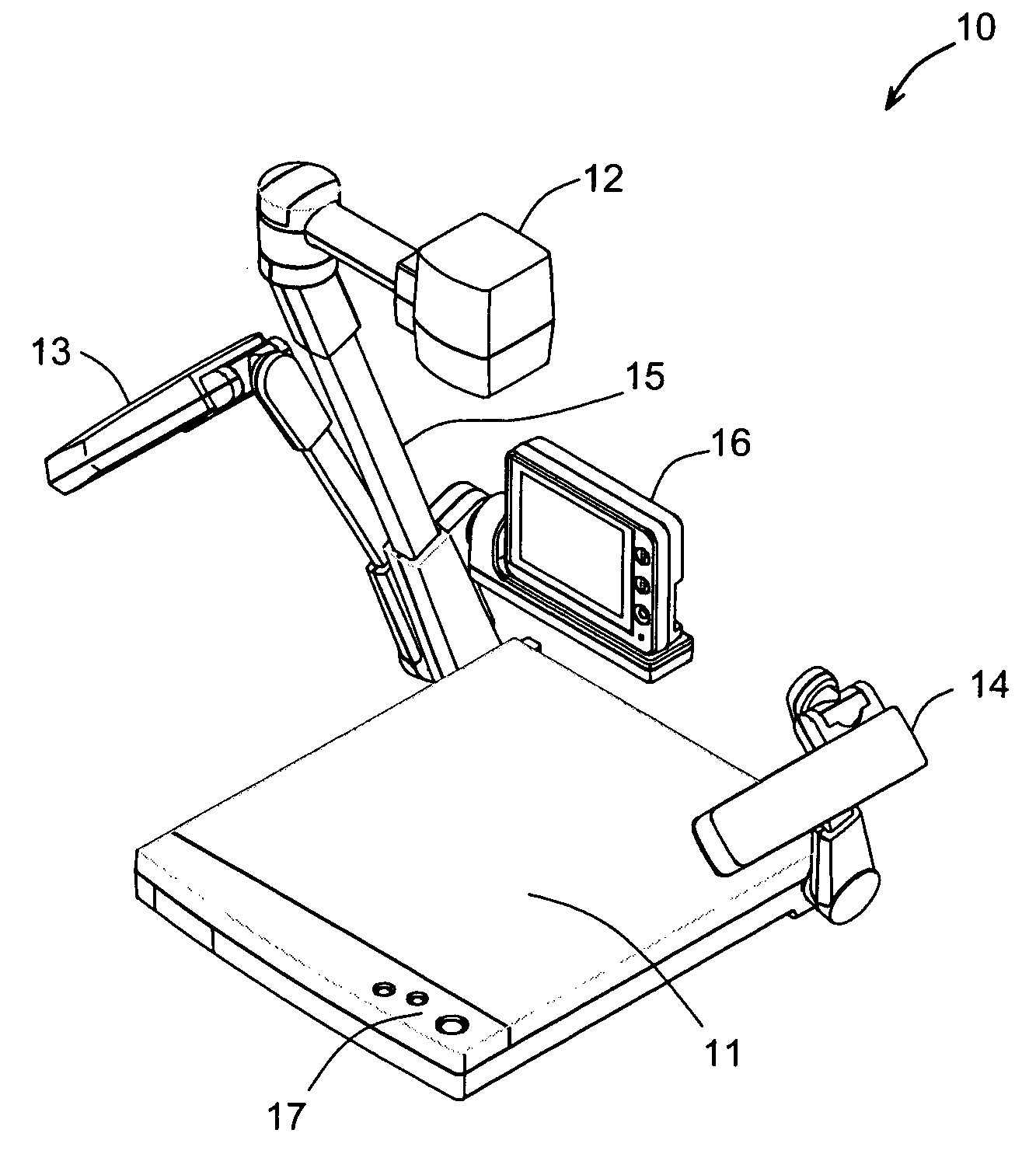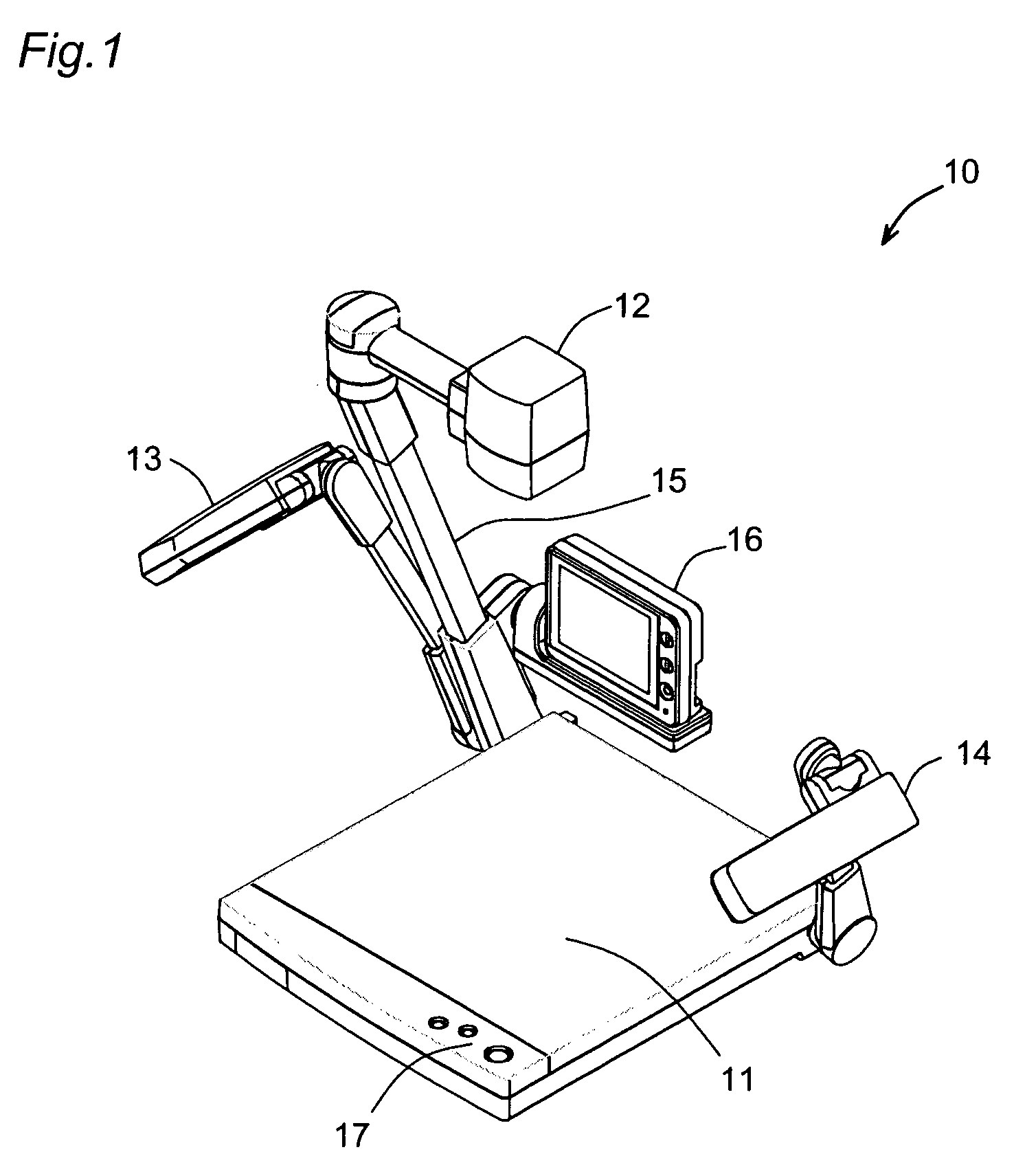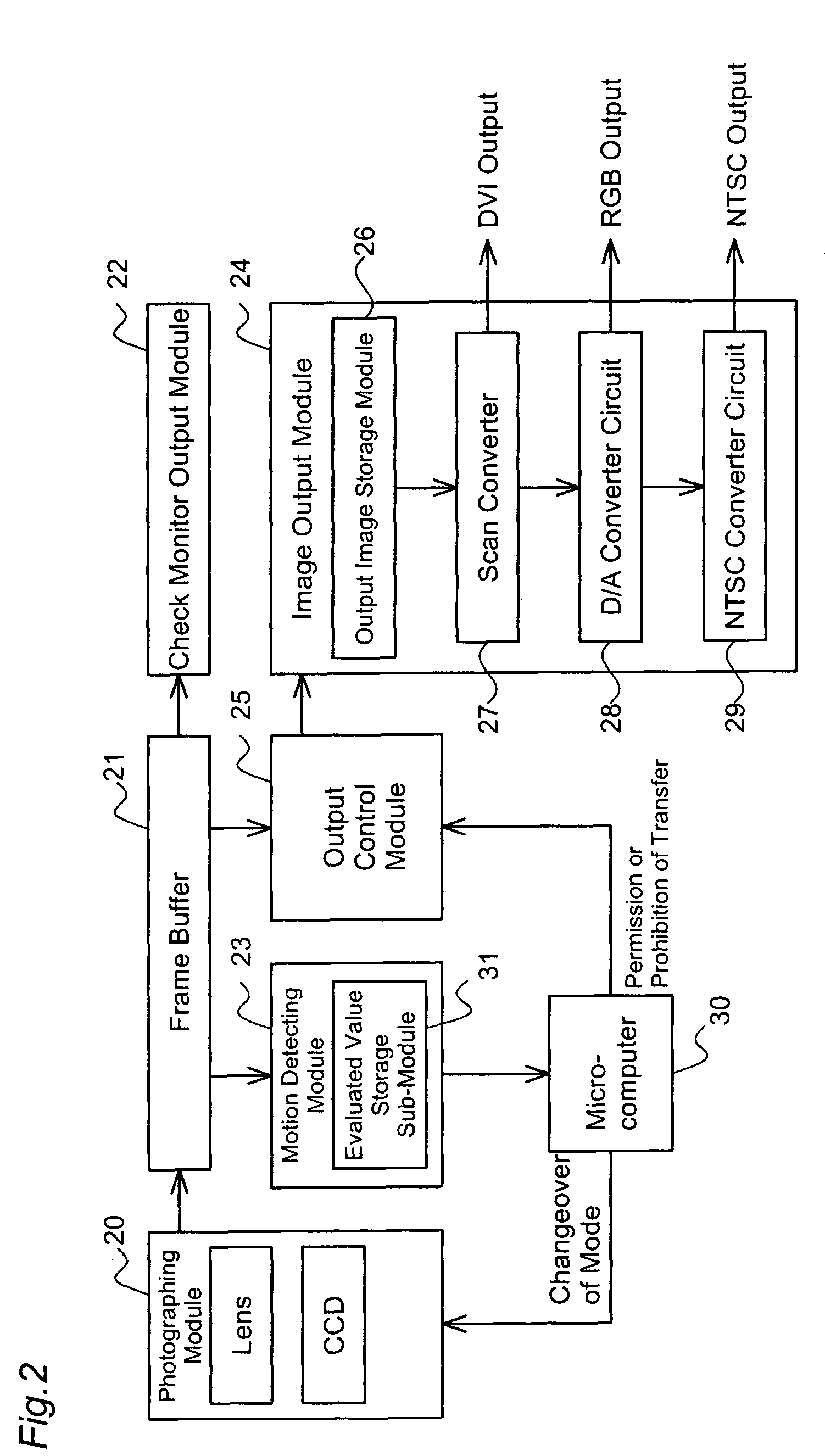Camera-assisted presentation system
a technology of camera-assisted and presentation system, which is applied in the field of camera-assisted presentation system, can solve the problems of affecting the presentation impression, and achieve the effect of improving the image display
- Summary
- Abstract
- Description
- Claims
- Application Information
AI Technical Summary
Benefits of technology
Problems solved by technology
Method used
Image
Examples
first embodiment
A. First Embodiment
(A1) Outline of Camera-Assisted Presentation System
FIG. 1 is a perspective view schematically illustrating a camera-assisted presentation system 10 in a first embodiment of the present invention. The camera-assisted presentation system 10 includes a table 11 occupying most of its bottom area, a camera head 12 facing the table 11, and a pair of lamps 13 and 14 located on the left and the right sides of the table 11 to illuminate the upper surface of the table 11. Each of the lamps 13 and 14 is pivotally rotatable about the corresponding left or right rear end of the table 11 and is used to photograph an object or a material mounted on the table 11.
The camera head 12 is supported by an arm 15 to face a practically center area of the table 11 and is actuated to photograph a diversity of materials mounted on the table 11. The camera head 12 includes an auto-focusing CCD camera and has various functions relating to photographing, for example, functions of zoom and ...
second embodiment
B. Second Embodiment
(B1) Internal Structure of Camera-Assisted Presentation System
FIG. 4 is a block diagram schematically showing the internal structure of another camera-assisted presentation system 10A in a second embodiment of the present invention. The camera-assisted presentation system 10A of the second embodiment has a photographing module 40, a frame buffer 41, a check monitor output module 42, a motion detecting module 43 including an evaluated value storage sub-module 51, an image output module 44, an output control module 45, and a microcomputer 50. The image output module 44 includes an output image storage sub-module 46, a scan converter 47, a D / A converter circuit 48, and an NTSC converter circuit 49. The functions of the respective constituents in the second embodiment are substantially similar to those of the constituents of the camera-assisted presentation system 10 in the first embodiment. The difference is that the output control module 45 of the second embodime...
third embodiment
The third embodiment adopts the simple structure to prevent any image showing the setting action of the material from being undesirably displayed.
D. Modified Example
Another image output control routine is discussed below as a modified example of the first embodiment. FIG. 8 is a flowchart showing the image output control routine in the modified example of the first embodiment. The microcomputer 30 sets the photographing module 20 in the all pixels reading mode and inputs image data representing an object photographed in the all pixels reading mode into the frame buffer 21 (step S40). The motion detecting module 23 is then activated by the microcomputer 30 to detect a motion of the object (step S41). In the case of detection of a motion of the object at step S41, the microcomputer 30 controls the output control module 25 to prohibit transfer of the image data (step S42). In the case of detection of no motion of the object at step S41, on the other hand, the microcomputer 30 cancel...
PUM
 Login to View More
Login to View More Abstract
Description
Claims
Application Information
 Login to View More
Login to View More - R&D
- Intellectual Property
- Life Sciences
- Materials
- Tech Scout
- Unparalleled Data Quality
- Higher Quality Content
- 60% Fewer Hallucinations
Browse by: Latest US Patents, China's latest patents, Technical Efficacy Thesaurus, Application Domain, Technology Topic, Popular Technical Reports.
© 2025 PatSnap. All rights reserved.Legal|Privacy policy|Modern Slavery Act Transparency Statement|Sitemap|About US| Contact US: help@patsnap.com



